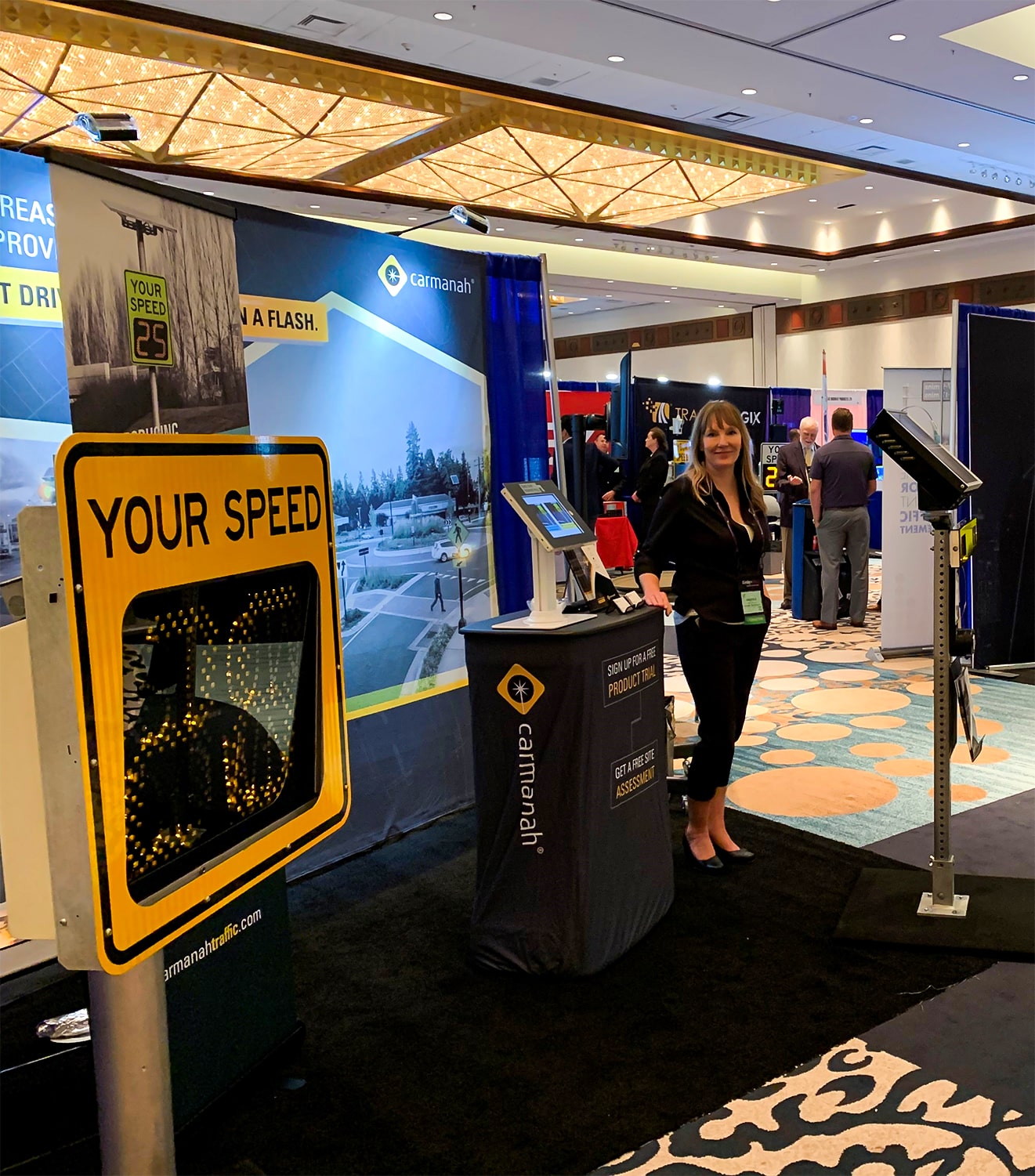Thanks for visiting us!
Here’s a quick recap of some of our takeaways and highlights from this year’s Annual Meeting. We’ve been exhibiting at ITE for many years and we’re always excited to join the fun.

This year’s conference marks a bit over a year since ITE and Carmanah worked together with the Federal Highway Administration (FHWA) to reintroduce the rectangular rapid flashing beacon (RRFB) to MUTCD interim approval. ITE leadership engaged in numerous discussions with FHWA staff and the National Committee on Uniform Traffic Control Devices (NCUTCD) to keep the RRFB an essential part of the traffic safety toolbox. Check out that story in last year’s ITE Journal here.
This year, we asked attendees if they thought accessible pedestrian features should be mandatory for mid-block crosswalks. Using more accessible pedestrian features, like a talking push button, gives audible confirmation that the yellow lights are flashing. This confirmation can help pedestrians with visual impairments feel more comfortable using mid-block crossings. Simple audible tone push buttons provide no audible confirmation the lights are flashing and are also used in signalized intersections where pedestrians must wait for the lights to change and the pedestrian “WALK” signal to activate. This may confuse visually impaired pedestrians when used at a mid-block crosswalk. However, making accessible pedestrian features mandatory can add to project cost. What do you think? Enter your vote below.
We also asked if attendees thought icons and emojis belong on radar speed signs. Many radar speed sign manufacturers offer happy and sad faces that can be configured to activate when drivers either travel at the posted speed limit or are speeding. We believe that emojis don’t provide a clear enough message and may confuse drivers: a consistent, uniform, and clear message (like “SLOW DOWN”) is crucial for drivers to understand and adjust their speed accordingly. What do you think? Enter your vote below.
The conference began with an opening speech from Austin mayor Steve Adler. He talked about the Texas Transportation Commission’s recent mandate to the Texas Department of Transportation (TxDOT) to push forward Vision Zero practices and end traffic fatalities by 2050. Along with this, he brought up #EndTheStreakTX, a campaign to raise awareness of the tragic statistic that since November 7, 2000, at least one person has died on Texas roadways every single day. TxDOT is asking people to share personal stories of loved ones lost in car crashes on social media using the #EndTheStreakTX hashtag. We included one of their infographics below—you can learn more about this campaign and download their social media and print materials here.

Like every year, ITE 2019 was packed full of must-attend educational sessions and workshops, discussing the latest issues and innovations within the transportation space. Here are some highlights below from Twitter (thanks to Peter Koonce, Sarah Abel, and Holly G. Stowell for these updates!):
Seattle using 50th percentile and @USDOTFHWA Safety Program research and dramatic decreases in crashes with this approach #VisionZero pic.twitter.com/FoBmXNvFH3
— Peter Koonce (@pkoonce) July 22, 2019
Read the Governors Highway Safety Association report here.
For #mobility in #pittsburghPA, @walk_left Karina Ricks says, “if it’s not designed for everyone, it’s not for us.” @ITEhq #ITEAustin2019 #planning #transportation #MaaS #MOD pic.twitter.com/s9SheWX2r3
— Sarah Abel (@s_abel) July 23, 2019
Gen Z’ers talk about what they expect when it comes to road safety. “Follow the rules,” one kid emphasized. #ITEAustin2019 #safety @ITEhq pic.twitter.com/LQu3VCZ2mx
— Holly Gilbert Stowell (@HollyGStowell) July 23, 2019
The next show you can find us at is the 2019 IMSA Forum and Expo in New Orleans, LA, in mid-August. Thanks again, and we look forward to next year’s ITE Annual Meeting in New Orleans!

